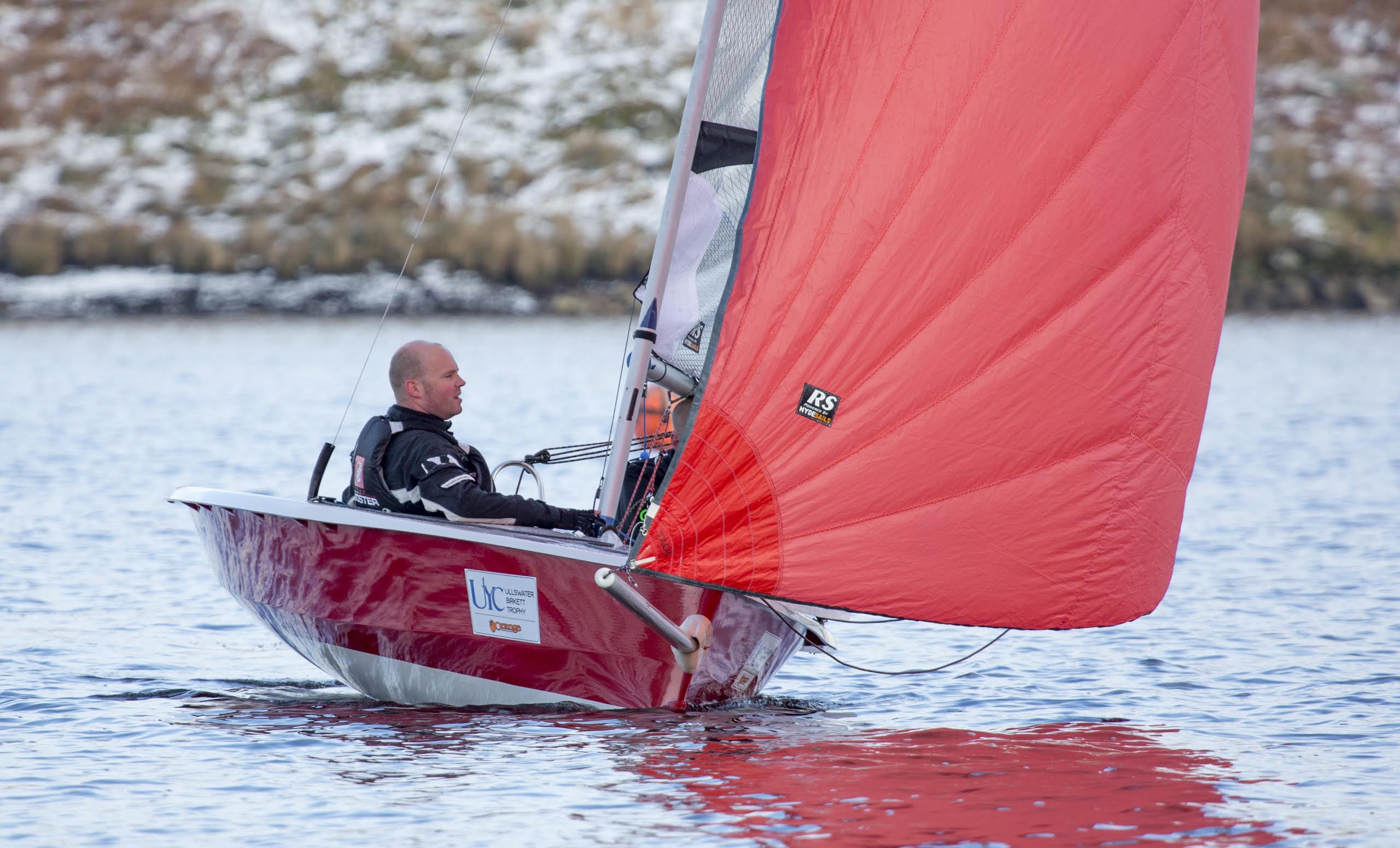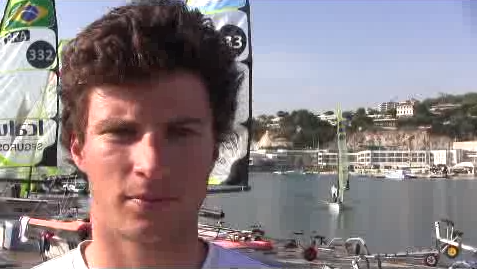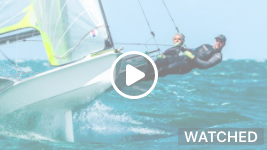As with almost every aspect of our lives, the internet has had a massive effect on sailing. Sailing out of Stokes Bay, we’re spoilt for weather information and I use a combination of the club website live data, a weather beacon in the middle of the Solent which feeds into the Bramblemet website, and Windguru for a forecast.
Living 40 miles away from the club, it’s nice to have a good sense that you’re going to get a good sail when you’ve driven all that way. The result is that pretty much every sail I’ve done this year has been a cracking one in a Force 3-5. Armed with all this online data, I tend not to bother making the 80-mile round trip if the forecast is a bit marginal. Easier to go for a bike ride around North Hampshire instead.
Trouble is, some days I get home from the bike ride and torture myself with a quick peak at the internet to see how the wind is doing. This is never a good idea, because there’s nothing worse than seeing that the predicted drifter has actually morphed into a sunny Force 4. Not only that, but if you live your life by Windguru* (* other websites are available), there’s the risk of only being any good at sailing the boat when it’s a solid breeze. Truth is, I’ve never particularly enjoyed sailing the Musto Skiff in sub-trapezing conditions. My middle-aged knees scream out for a rest, but between moving your body weight, steering the boat smoothly and working the mainsheet and sail controls, you’re forced to contort yourselves into all kinds of ungainly positions. It’s not an attractive proposition, although not going sailing in those conditions is not exactly the path to improvement either.
And that’s the problem with the internet and all its wonderful live data. The times that I go sailing tend to be amazing, but I tend to go sailing less - and I’m not getting any better at light airs sailing. Might have to go cold turkey on the internet and go sailing whatever the weather.
Five or six sails in the Musto Skiff in the first half of 2013 is not great, and I felt woefully underprepared for the Nationals at Highcliffe Sailing Club. With a high-wind forecast for the four-day event, a few of the regulars stayed away and we had a slightly disappointing turnout of 40 boats. There was no pre-entry and that gave some the option of backing out at the last minute. Offering - or insisting on - pre-entry to regattas really does ramp up participation on the day, so it was a pity there wasn’t some sort of incentive to enter early for the Nationals and break the magic half-century.
Never mind, 40 competitors is plenty enough for a good boat race in a Musto Skiff. A lot of the time, in a breeze certainly, you’re really competing against yourself, testing your limits. Do you go for the safety gybe, maybe lose a boat or two, but stand a better chance of staying upright? Or does the red mist descend, and do you go all out for the fancy rack-to-rack masterpiece with kite never collapsing, just like you’ve seen in Richard Stenhouse’s Musto Skiff DVD, K16? Hmmm, easier watched than done.
For big championships where I care about the result, I tend to favour the former. It’s not a very Hollywood approach to life, but chickening out and going for the safety manoeuvre tends to work out better than the braver, foolhardier alternative. Spectating the medal races at Kiel Week in Germany recently, it was reassuring to see that even some of the full-time Olympic sailors go the chicken route too. The German girls Tina Lutz and Susann Beucke were leading the final race in the 49er FX skiff in quite big breeze and dropped their kite half way down the run to the finish. The Aussies overtook the Germans and lost the race, but had done enough to win the regatta. It’s not a very heroic look, but hey, it got them the gold medal.
Actually, I thought their lack of gennaker made the Germans look more vulnerable, not less, as the kite takes the force out of the mainsail. And I’ve started to find the same when gybing the Musto Skiff. If you do try the Sten K16 method of Hollywood gybing, it does a feel a lot safer as the boom gybes with a lot less force. But learning the art of holding the tiller extension, the kite sheet and the lazy kite sheet, plus the mainsheet, all in your back hand as you’re unhooking with your front hand whilst stepping smoothly under the boom and across the boat - this is the kind of multitasking that doesn’t happen overnight.
I started practising the ‘Sten gybe’ at Stokes Bay last autumn, and I was rubbish at it. The strange thing was that, despite very little sailing this year, when I came back to gybing the Musto Skiff in a breeze, I’d actually got better at this fancy form of gybing than previously. I guess it’s part of the process of creating some muscle memory, a bit like when you first learn to drive a car and you’ve got 10 things to think about all at once. What seems impossible at first, the mind gradually digests and passes on subliminal messages to your body to execute particular movements without conscious thought. Once you’ve scraped through your road test and you’ve been driving for a while, well, sometimes you have those moments when you wonder how you’ve driven the past 10 miles down the motorway because you haven’t been paying the blindest bit of conscious attention to what you were doing. You drove without thinking, yet you didn’t crash. ‘Unconscious competence’ is what it’s called in the trade. If only you spent as much time sailing as you do driving a car, imagine how good you’d be!
Roll Tacks - July 2013
Related Articles

RS400 wins a cold, light Brass Monkey
 Chris Pickles & Matt Sharman narrowly beat a Scorpion to win at a chilly, light airs Yorkshire Dales...
Chris Pickles & Matt Sharman narrowly beat a Scorpion to win at a chilly, light airs Yorkshire Dales...
Read More
 Chris Pickles & Matt Sharman narrowly beat a Scorpion to win at a chilly, light airs Yorkshire Dales...
Chris Pickles & Matt Sharman narrowly beat a Scorpion to win at a chilly, light airs Yorkshire Dales... 
Roll Tacks - May 2012
The death of Steve Jobs last year was one of the most discussed topics on the internet last year. Anyone who has an Apple product - a Mac, an iPod, and iPad or an iPhone, to name a few - tends to appreciate the beauty and simplicity of the technology. It’s technology that for many people has been life-changing, and I guess that’s why there was such an outpouring of collective grief when Jobs died aged just 56.
Read More

Roll Tacks - 1 December 2011
If a fleet racing championship comes down to a two-horse race, it turns into a match race, right? We’ve seen it enough times that it must be OK.
Read More

James Peters starting in a tough fleet
Read More
 James Peters, one of Britain's up and coming 49er stars, talks about starting in a tough fleet at the 49er World Championships in Marseille. With a left-favoured course, getting a start and holding your lane is a critical skill. James talks about his approach to creating a gap and being able to put the bow down for good speed off the line....
James Peters, one of Britain's up and coming 49er stars, talks about starting in a tough fleet at the 49er World Championships in Marseille. With a left-favoured course, getting a start and holding your lane is a critical skill. James talks about his approach to creating a gap and being able to put the bow down for good speed off the line....

Jim Colley: How I rebooted my mindset
Read More

Jim Colley has the reigning Olympic Champions breathing down his neck as the young Aussie tries to win his first 49er Worlds race....
